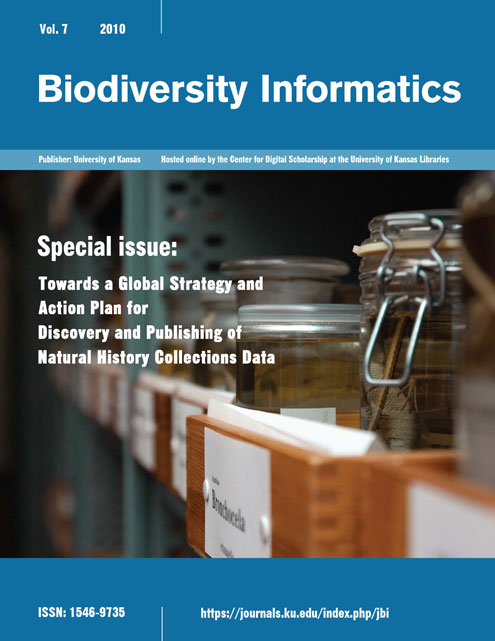Leveraging the fullest potential of scientific collections through digitisation.
DOI:
https://doi.org/10.17161/bi.v7i2.3987Keywords:
biodiversity, metadata, digitisation, science infrastructure,Abstract
Access to digitised specimen data is a vital means to distribute information and in turn create knowledge. Pooling the accessibility of specimen and observation data under common standards and harnessing the power of distributed datasets places more and more information and the disposal of a globally dispersed work force, which would otherwise carry on its work in relative isolation, and with limited profile and impact. Citing a number of higher profile national and international projects, it is argued that a globally coordinated approach to the digitisation of a critical mass of scientific specimens and specimen-related data is highly desirable and required, to maximize the value of these collections to civil society and to support the advancement of our scientific knowledge globally.Downloads
Download data is not yet available.
Downloads
Published
2010-10-09
Issue
Section
Articles (peer-reviewed)
License
Copyright for articles published in this journal is retained by the authors, with first publication rights granted to the journal. All articles are licensed under a Creative Commons Attribution Non-Commercial license.
Competing Interests: The authors have declared that no competing interests exist.
How to Cite
Baird, Roger Charles. 2010. “Leveraging the Fullest Potential of Scientific Collections through Digitisation”. Biodiversity Informatics 7 (2). https://doi.org/10.17161/bi.v7i2.3987.

